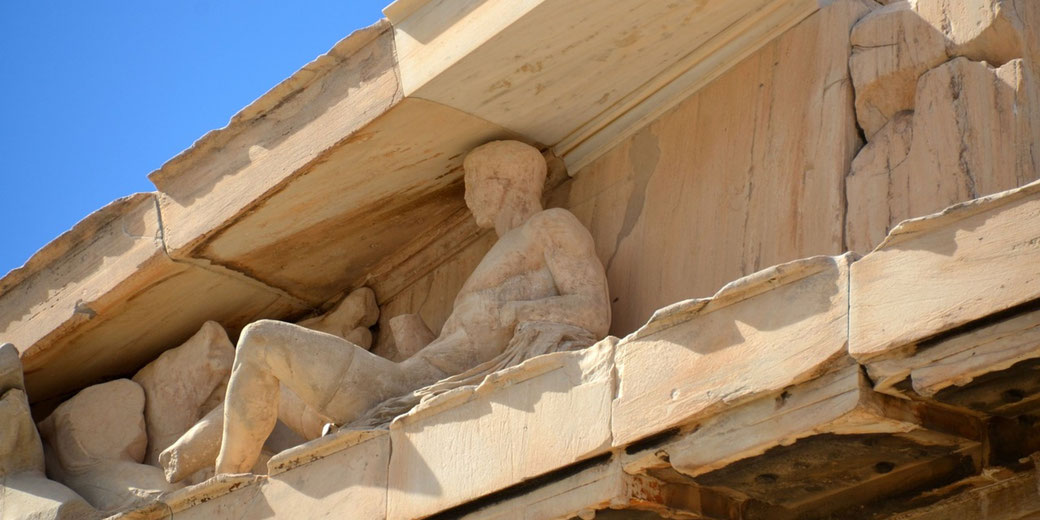What was the Delian League?

In the following period after the Persian Wars, the Greek world faced the challenge of securing its freedom and rebuilding its damaged economies.
Coastal cities and island states, open to renewed Persian attacks, sought shared strength to protect trade routes and maintain their independence.
A new alliance was developed, and it combined ships, soldiers, and wealth into a shared treasury on the island of Delos.
Thanks to its naval power, Athens took the leading role in this coalition, gradually transforming its influence into complete control over its allies.
Why was the Delian League created?
The Delian League formed in 478 BCE as a coalition of Greek city-states that united under Athenian leadership after the Persian Wars.
The alliance aimed to defend the Aegean world from further Persian aggression and to protect trade routes vital for economic recovery.
Member states contributed either ships and men or a payment to a common treasury that was kept on the sacred island of Delos.
Athens possessed the largest navy and most resources, so it directed the League’s operations and soon gained a position of authority that few members could challenge.
Greek city-states had suffered serious damage during the Persian Wars, and many communities remained open to renewed attacks from Persia.
Persian garrisons continued to hold territory in Thrace and on several Aegean islands, and the Great King still had ambitions in Greece.
Leaders in Athens, particularly Aristides, argued for a permanent naval alliance that could ensure security and maintain freedom for the smaller states of the Aegean.
The treasury of the League was placed at Delos, which was a neutral island associated with the god Apollo.
Aristides organised an initial assessment of contributions in 478 BCE, but the exact details of how this assessment was applied are partly uncertain.
Some states, such as Chios, Lesbos, and Samos, provided their own fleets, while poorer members paid tribute in silver.
Over seventy states joined in the early years, which brought about a level of military cooperation not seen before in the Greek world.
Athenian leaders portrayed the League as the continuation of the Panhellenic struggle that had delivered victory at Salamis and Plataea.
Many states trusted Athens because of its naval power and its recent record as a defender of Greek liberty.
Early successes and Athens' growing influence
The League won important victories against Persia in the first decades after its creation.
Under the generalship of Cimon, the Athenian fleet achieved a major success at the Battle of the Eurymedon River, which likely took place around 469 BCE, where Persian forces lost a large number of ships.
The alliance also captured the Thracian stronghold of Eion, which secured resources for future campaigns.
League forces liberated several Ionian cities that had remained under Persian rule since the end of the Ionian Revolt.
Athens gradually used the League’s navy to consolidate power. Many members found it easier to provide silver rather than maintain their own fleets, so the Athenian contribution became dominant.
When Naxos attempted to leave the alliance around 467 BCE, Athens besieged the island, dismantled its walls, and forced it to continue paying tribute.
Thasos rebelled in 465 BCE after disputes over trade and mining rights in Thrace, yet Athens suppressed the revolt after a long siege.
This showed that membership in the League had become compulsory under Athenian direction.
The transfer of the League’s treasury from Delos to Athens took place around 454 BCE, though the exact year is debated by modern scholars.
Funds from the tribute supported ambitious building projects, including the Parthenon, and financed the growing power of the Athenian state.
Pericles defended the use of League money for these projects on the grounds that Athens provided protection for all members.
The League that had begun as a mutual defence pact had by that time become the foundation of an Athenian empire in the Aegean.
Decline during the Peloponnesian War
The rise of Athenian power through the League contributed to growing tension with Sparta and its allies in the Peloponnesian League.
The rivalry between the two coalitions escalated into the Peloponnesian War in 431 BCE.
During the first decade of the war, Spartan invasions of Attica combined with a devastating plague in 430 BCE to weaken Athens severely.
Pericles died from the disease, and political leadership became unstable as the war continued.
Also, the Sicilian Expedition between 415 BCE and 413 BCE caused severe losses for Athens.
The destruction of much of the Athenian fleet encouraged several members of the League to revolt, including Chios and Miletus.
Sparta gained Persian financial support, which allowed it to build a new fleet able to challenge Athenian control of the sea.
The final defeat of Athens at the Battle of Aegospotami in 405 BCE ended the power of the Delian League.
Athens surrendered in 404 BCE and was forced to dismantle its empire. The League no longer functioned as an active alliance after Athens' defeat, and Sparta installed oligarchic governments in several former allied states.
The collapse of the alliance left Greece divided and unstable, which over the following decades created conditions that enabled the rise of Macedonian power under Philip II in the fourth century BCE.
What do you need help with?
Download ready-to-use digital learning resources
Copyright © History Skills 2014-2025.
Contact via email
With the exception of links to external sites, some historical sources and extracts from specific publications, all content on this website is copyrighted by History Skills. This content may not be copied, republished or redistributed without written permission from the website creator. Please use the Contact page to obtain relevant permission.





